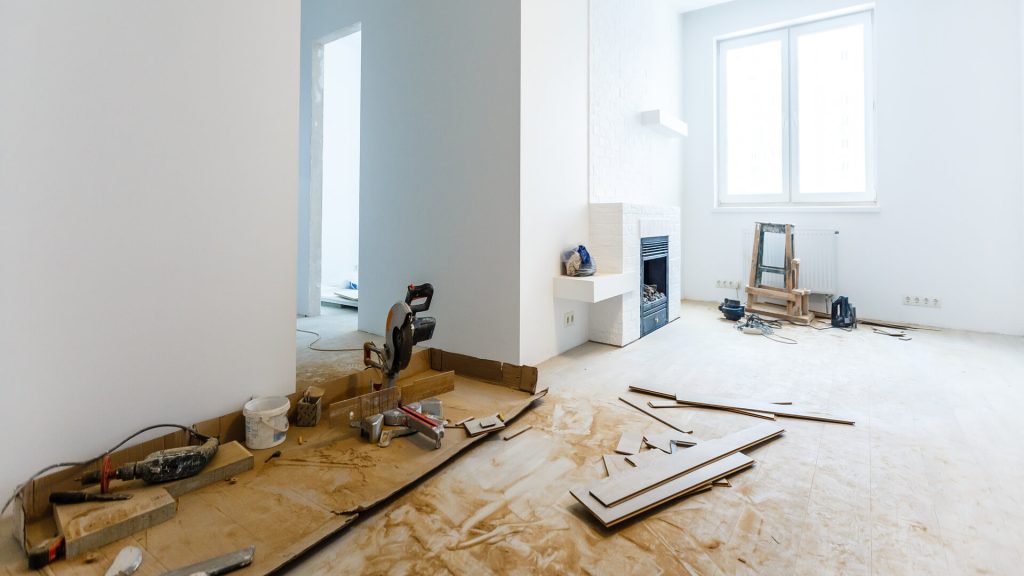With land becoming harder to come by, knockdown rebuilds are becoming a popular option for new homebuyers. A knockdown rebuild is where you purchase an existing house, and then demolish the building to build a new design. A key reason for doing this is it allows you to acquire land in desirable locations without waiting for vacant land to become available. Surprisingly, a knockdown rebuild can be a more affordable option than renovating an entire house. Where you may hit a speedbump is if the property you purchase is a heritage home. Let’s take a look at what a heritage place is and how this affects any plans for a knockdown rebuild.

What is a heritage-listed property?
A heritage building is a house or structure that has been deemed to have historic, cultural, aesthetic or ecological significance to the local area and community and therefore should be preserved. Often the building helps tell the story of the town, state or even country. The literal meaning of heritage is something that will be inherited, so the idea behind heritage listings is to ensure historically significant buildings will be inherited by future generations of the community.
Some examples you may find in your area include convict-era buildings which may house local businesses, old houses built in the 19th century, churches, school buildings, war memorials, courthouses or any historically significant structure.
A building can be heritage-listed for numerous reasons including:
- The building is over 100 years old and represents a particular period (for example, a building originally constructed in 1850 will provide a real-life example of architecture from the time and can’t be replaced in terms of historical value).
- A historic figure once lived there (the birthplace of a significant Australian person).
- The structure helps tell the history of Australia (old jails, lighthouses, gold mining sites, etc).
We should point out that if you purchase a heritage-listed property, it is still your private property. You’re not expected to make your structure open to the general public and the usual laws apply when it comes to trespassing, etc. History buffs may show interest in your home, but they’ll need to ask your permission before entering the house.

Are there different levels of heritage listings?
The following are the levels of heritage listing:
World Heritage Listing: These are structures recognised by the United Nations Educational, Scientific and Cultural Organisation (UNESCO) and are of international significance. We’re talking about the Sydney Opera House and Great Barrier Reef levels of iconic, so with all due respect, the house you purchase is unlikely to be on this list.
National Heritage Listing: Structures that have national significance such as the Melbourne Cricket Ground, Government House and the Australian War Memorial. It probably goes without saying that if you knock any of these down, you’ll be in big trouble.
Commonwealth Heritage Register: This only includes places run by the government such as post offices, lighthouses, defence force sites, etc. If you’re looking at this list to figure out if your home is heritage-listed, you’re in the wrong place.
Queensland Heritage List: Every state has its own version of this list, and it is where you’re likely to find your house if it is heritage listed. A wide range of structures are on this list from train stations to school buildings to old houses to war memorials.
National Trust Register: This is a list of buildings listed by the Queensland Branch of the National Trust. This list is legally protected, with the goal being to raise awareness of historically significant sites. Places that have features on the National Trust List have gone on to gain Heritage Listing status down the line.

How do I know if my building is a heritage listing?
All buildings that have been deemed as heritage places will be listed on a heritage register, either by your local council, local government or both. It’s worth checking whether your home is on the National Trust Register as well. While there are no legal ramifications for knocking down a house on this list, someone obviously cares enough about it to put it on the list, so you may encounter some blowback.

What are the legal regulations around demolishing heritage-listed homes?
Protected buildings, such as any listed on the heritage listing, can’t be knocked down or receive major renovations without specific approval from the correct authorities. Certain buildings, such as those built before 1947 that have been deemed essential to the area’s history, are very unlikely to be granted the okay to demolish.
Applying to knock down a heritage place can be costly and time-consuming, so it is worth finding out a building’s heritage status BEFORE you purchase rather than after.

Are there circumstances in which you can demolish a heritage home?
Yes, there are, but it’s very much on a case-by-case basis. You’ll need to talk to your local council and obtain approval before proceeding. Some of the most common reasons that a heritage-listed building would be allowed to be knocked down include safety issues, the building has become delipidated or the council agrees the site can be memorated by a plaque or other means.

What are some alternatives to the demolition of a heritage home?
Purchase a home that isn’t heritage-listed
If you’re planning to purchase in an established neighbourhood where a knockdown rebuild is a distinct possibility, a simple solution is to purchase a house that isn’t a heritage place. However, what often happens is someone finds a perfect location and then discovers the house on the land is a heritage listing.

Renovation
The alternative to demolition many people consider is a major renovation. What you might find surprising is that a renovation can actually end up costing more than a knockdown rebuild. How can that possibly be?
Renovations can be like opening a can of worms as once you start, you may discover there are a lot more problems with the house than you expected. Things like asbestos, structural damage, rot, termites and black mould can add tens of thousands of dollars to your bill and make the entire project more complicated.

Are there consequences for knocking down a heritage property without permits or permission?
Yes. Believe it or not, there are numerous occasions where people have knocked down a heritage building either without checking the building’s heritage status beforehand or just because they didn’t think it was a big deal. There was even a case where winners of the TV show The Block got into hot water for knocking down a heritage building without the proper approvals.
The consequences of knocking down heritage places will vary depending on the severity of the offence. You may receive a hefty fine or even jail time.
Our tips on navigating the regulatory landscape
- Before any house can be demolished, heritage or not, you’ll need to acquire documents such as a demolition permit. Consider checking the heritage status of your house as part of your due diligence.
- When purchasing a house, the real estate agent should inform you of key information like heritage status.
- Depending on what you’re trying to do, it may be worth getting legal advice.
- Know when to pack it in. Some sites simply won’t be allowed to be knocked down, no matter how much money you throw at the cause.
- Talk to a building broker like Buildi. We can help you throughout your building journey and save you time, effort and money.



0 Comments